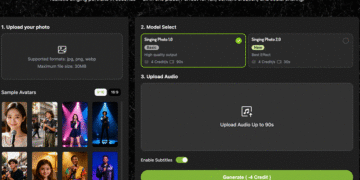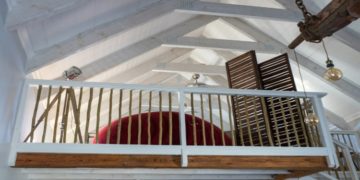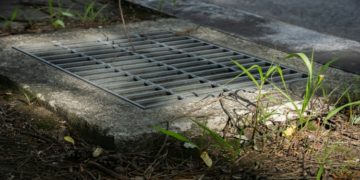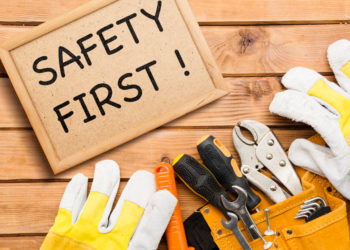As the seasons shift from summer’s heat to winter’s chill, homeowners begin the usual rituals—rotating wardrobes, prepping outdoor spaces, and adjusting daily routines. But there’s one crucial system that often gets overlooked until it’s too late: your HVAC system.
Between heating up your home during snowy nights and cooling it during sweltering afternoons, your system has to adapt, and fast. Preparing for seasonal transitions isn’t just smart—it’s essential for long-term performance, safety, and energy savings.
Let’s explore how to keep your heating and cooling systems ready year-round, and why routine care from a trusted HVAC contractor is more than just a maintenance checklist—it’s a strategy for home comfort.
Why Seasonal HVAC Care Matters
Your HVAC system is a high-performing machine designed to regulate indoor climate with precision. But like any mechanical setup, it operates under stress—especially during seasonal extremes.
When the weather changes suddenly, your furnace or air conditioning system may need to jump into action after months of minimal use. That rapid change can expose weak points like clogged filters, worn parts, or thermostat calibration issues. If your furnace hasn’t been used since spring, a cold snap could push it past its limit, leading to emergency calls for furnace repair that could have been avoided.
Proactive seasonal maintenance ensures your system transitions smoothly, minimizing downtime and avoiding uncomfortable surprises when temperatures swing.
The Pre-Fall Checklist: What to Do Before the First Chill
Preparing your heating system ahead of cold weather isn’t just about flipping the thermostat to “heat.” There’s a method to ensure your home stays warm without unexpected hiccups.
1. Test the Heat Early
Run your system for 10–15 minutes before the temperature drops. Strange smells, lack of airflow, or slow response times could all indicate internal issues that need attention.
2. Replace the Filter
A dirty filter can restrict airflow and strain your system. Change it at the beginning of each season, especially if your system has been idle.
3. Clear the Vents
Blocked vents prevent efficient air circulation. Walk through your home to ensure furniture or drapes aren’t covering supply or return vents.
4. Schedule a Professional Inspection
Routine inspections allow professionals to identify warning signs that homeowners might miss. Trusted contractors like Nardco Heating & Air Conditioning often catch minor issues before they turn into costly repairs.
The Spring Switch: Getting Your Cooling System Ready
Just like your furnace needs attention before winter, your AC system benefits from a spring refresh. Even if the weather feels mild, prepping early gives you the advantage.
1. Inspect the Thermostat
Test your cooling setting before hot weather arrives. If your thermostat doesn’t respond correctly or seems inaccurate, it may need calibration or replacement.
2. Clean Around the Outdoor Unit
Leaves, twigs, and debris can gather around your condenser during fall and winter. Clearing the area promotes airflow and cooling efficiency.
3. Check Insulation and Seals
Proper insulation reduces the burden on your system. Inspect weather stripping around windows and doors to prevent cool air from escaping.
4. Consider an Energy Audit
If your energy bills seem high during warmer months, it might be time for a home energy evaluation. This helps pinpoint weak spots in insulation or airflow, enhancing your system’s efficiency.
How Your HVAC Contractor Makes a Difference
Anyone can change a filter or test a thermostat, but not everyone can identify complex airflow issues, sensor failures, or component wear. That’s where an experienced HVAC contractor comes in.
A trained technician can:
- Inspect heat exchangers for cracks.
- Ensure refrigerant levels are correct.
- Calibrate your thermostat accurately.
- Assess electrical connections and blower performance.
More importantly, they can provide honest insight into whether a repair or replacement is the best long-term decision. When you’re trying to decide between short-term fixes or investing in system upgrades, that kind of expert input is invaluable.
Don’t Forget About Furnace Health
When cold weather dominates your region, furnace reliability is critical. A malfunctioning furnace doesn’t just mean discomfort—it can lead to safety risks like carbon monoxide leaks or fire hazards.
If you notice:
- Unusual odors or smoke,
- Inconsistent heating,
- A pilot light that frequently goes out,
- Or odd noises during operation,
then it’s time to prioritize professional furnace repair. These symptoms can point to underlying issues that affect safety and efficiency.
Reliable companies like Nardco Heating & Air Conditioning can evaluate your system and ensure you’re not caught off guard when the next deep freeze hits.
Long-Term Planning: Upgrade or Maintain?
As your HVAC system ages, efficiency naturally decreases. Most systems have a lifespan of 15–20 years, but how you maintain it along the way influences when that countdown starts ticking.
If your energy bills are climbing and your system requires frequent repairs, you might be better off with a new installation. Modern HVAC systems offer significant improvements in energy use, environmental impact, and climate control.
Still, not every issue requires a replacement. The right maintenance routine, paired with seasonal inspections, can prolong your system’s life and keep it operating efficiently.
Small Habits That Make a Big Impact
You don’t need to be an expert to adopt habits that support your HVAC system:
- Adjust the thermostat when you’re away. Lowering the heat or AC by a few degrees saves energy and reduces wear.
- Close curtains at night during winter. This helps trap heat inside your home.
- Use ceiling fans strategically. Fans can push warm air down in winter and create airflow in summer.
- Keep vents and registers dust-free. Clean airflow equals better system performance.
These low-effort habits contribute to the health of your HVAC system over time.
Final Thoughts
Seasonal transitions are inevitable, but discomfort doesn’t have to be. With the right preparation, your HVAC system can handle temperature swings with ease. Whether you’re bracing for sub-zero temperatures or preparing for a heatwave, small steps now can prevent costly repairs later.
An annual visit from a professional, routine filter changes, and some basic home habits will go a long way. And if you’re unsure where to start, turn to experts like Nardco Heating & Air Conditioning, who can guide you through the process and make sure your home is always comfortable—no matter the season.











































































